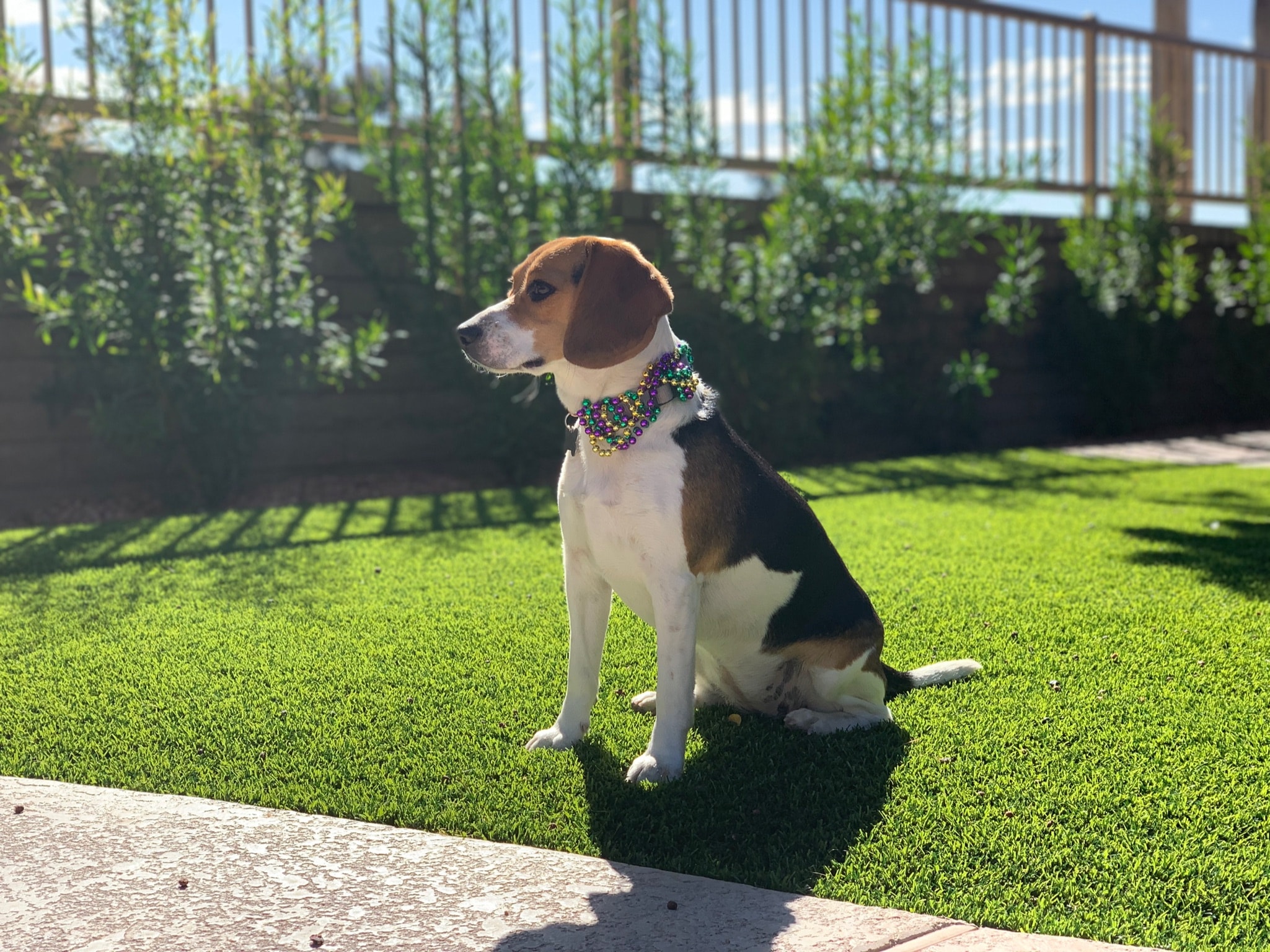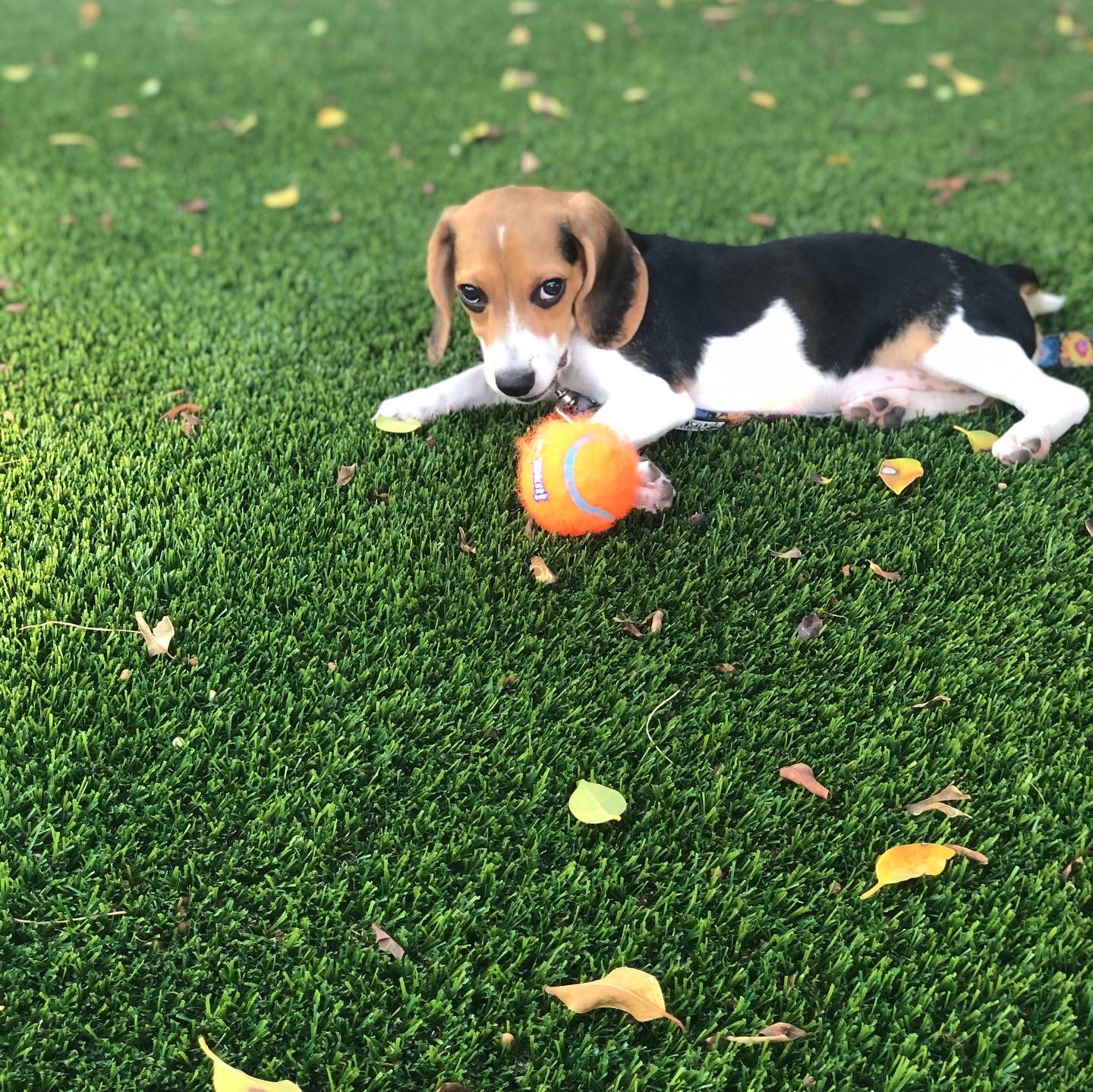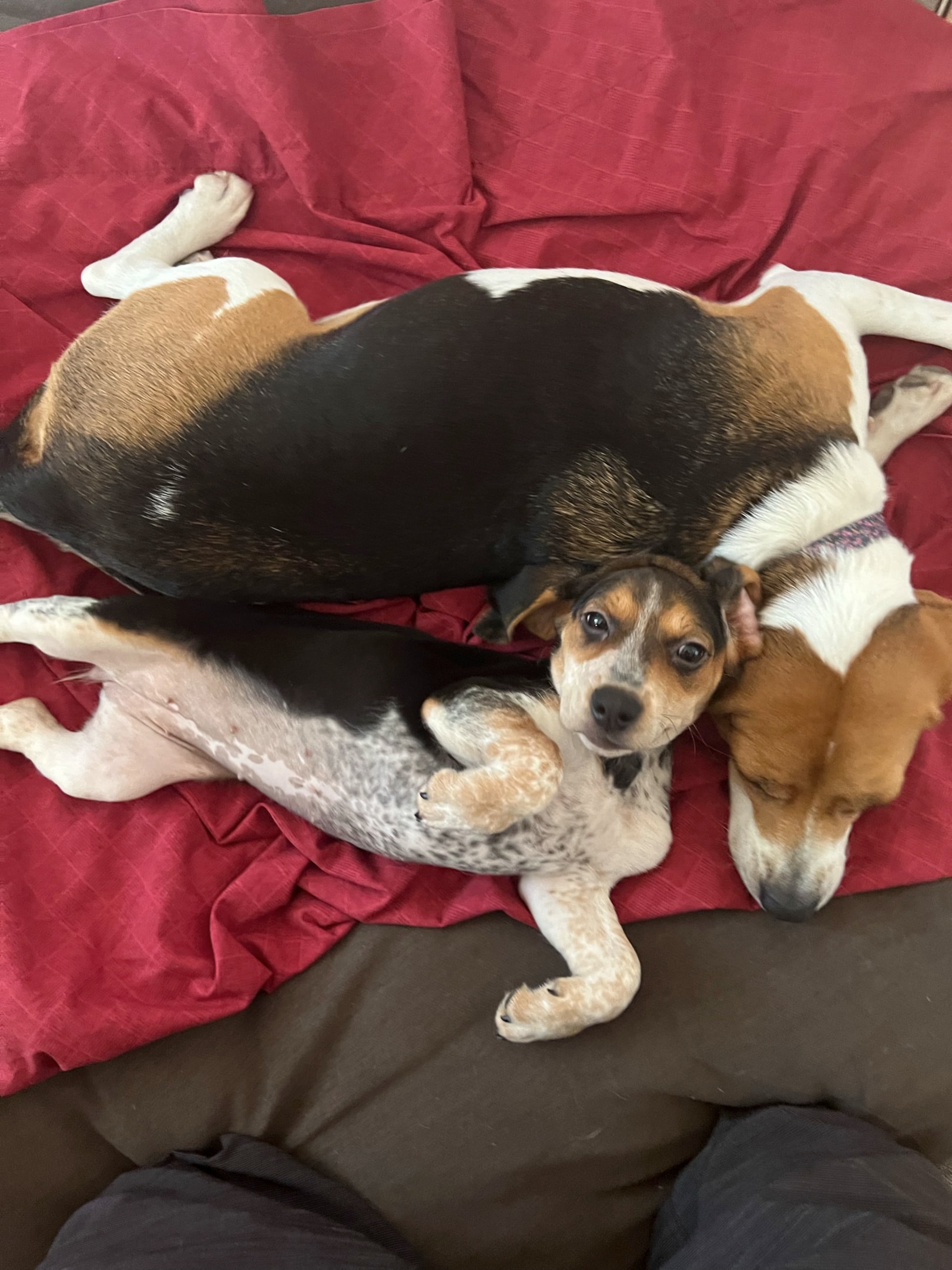Pocket Beagle dogs are a smaller, more compact version of the standard Beagle, combining all the charm and energy into a petite package. Historically, larger beagles became the primary choice for hunting, overshadowing the smaller pocket variants, highlighting their significance in the breed's development. Known for their friendly and playful nature, they make excellent companions. This article covers everything you need to know about Pocket Beagle dogs, from their unique traits and behavior to their care and grooming needs.
Key Takeaways
- Pocket Beagles are small hunting dogs with a rich history, known for their affectionate nature and playful energy, making them excellent family companions.
- They require regular exercise, a balanced diet, and minimal grooming, with health maintenance being crucial due to potential genetic health issues.
- Choosing a reputable breeder or considering adoption is essential for ensuring the health and well-being of Pocket Beagles while avoiding profit-driven breeding practices.
Find out how to train your beagle to be the well-behaved pup you desire – Read Free Report
Pocket Beagle Overview

The Pocket Beagle dog breed has a rich history that dates back to the 1400s. These tiny hunting dogs were initially bred to assist in hunting small game. Their popularity soared during the reign of Queen Elizabeth I in the 1500s, who famously kept them as companions during hunts. Often referred to as ‘glove beagles’ because they could fit into the palm of a hunting glove, Pocket Beagles have always been admired for their small stature and keen hunting abilities. Over time, larger beagles became the primary choice for hunting, overshadowing the smaller pocket variants.
Today, Pocket Beagles are beloved for their affectionate attitude and playful energy, as well as their historical significance. These dogs are known for their happy, outgoing nature, which makes them excellent family companions. Their inquisitive and determined character adds to their charm, making them a beloved choice among dog lovers.
Pocket Beagles, while smaller than Standard Beagles, share their endearing appearance and energetic disposition. Their historical significance as royal pets and hunting companions, combined with their modern appeal as affectionate and playful pets, contributes to their continued popularity.
Definition and Origin
The Pocket Beagle is a compact version of the popular Beagle dog breed, cherished for its friendly demeanor and small size. Even though Pocket Beagles are smaller in stature, they retain the same spirited and sociable characteristics as their larger Beagle counterparts. Keep in mind that “Pocket Beagle” is not an official name used by major kennel clubs, and these smaller dogs do not have their own breed classification. They are essentially miniature Beagles, bred to be smaller while retaining the beloved traits of the standard Beagle.
Pocket Beagle History
The history of the Pocket Beagle involves a degree of controversy and skepticism, particularly regarding the role of Robert Mock, a breeder who has been associated with popularizing the term and promoting smaller-sized Beagles. Despite his efforts, the concept of a distinct “Pocket Beagle” breed has been debated within the dog breeding community. There is no separate breed designation for these smaller dogs, and the official Beagle dog breed remains the only recognized breed, coming in two size varieties: 13” and 15”. This distinction underscores the importance of understanding that Pocket Beagles are simply smaller versions of the standard Beagle, rather than a separate breed.
Physical Characteristics of Pocket Beagles
Pocket Beagles are a distinct dog breed known for their petite size and charming looks. Standing between 7 to 12 inches tall and weighing between 7 and 15 pounds, these miniature beagles are notably smaller than their standard counterparts. Their petite, well-proportioned bodies appeal to those seeking a compact yet energetic companion, including those who might prefer an official beagle dog breed, small beagles, or a small dog breed like the miniature beagle dog.
Size and Weight
Standing between 7 to 12 inches tall, Pocket Beagles are among the smallest dog breeds. Though small, they retain the robust and sturdy build of the standard Beagle. Weighing between 7 to 15 pounds, Pocket Beagles are up to 50% smaller than their standard-sized relatives.
Their size doesn’t diminish their abilities or personality. Pocket Beagles exhibit the same lively and energetic demeanor as their larger counterparts, ideal for those who love Beagles but prefer a smaller dog.
Coat Type and Colors
The coat of a Pocket Beagle is short, smooth, and straight, requiring minimal grooming compared to other breeds. Their coats commonly feature colors like black, tan, and white, often in combinations such as black and tan, or red and white. These varied coat colors enhance their visual appeal, making each Pocket Beagle unique.
Although their coat is short, Pocket Beagles shed moderately and benefit from regular brushing to maintain their fur and reduce shedding. Weekly brushing typically suffices, though during shedding seasons, twice-weekly brushing may be necessary.
Temperament and Behavior

Pocket Beagles are known for their gentle, friendly, and playful nature, making them excellent companions for families and individuals alike. Pocket beagles are highly their temperament mirrors that of Standard Beagles, marked by a loving and inquisitive personality.
However, their high energy levels and occasional mischievous behavior mean they require regular exercise and mental stimulation to stay happy and healthy.
Family Compatibility
Pocket Beagles are ideal family pets due to their affectionate attitude and playful energy. They thrive in family environments, enjoying interactions with children and other pets. However, it’s crucial to supervise interactions between young children and dogs to ensure safety and positive experiences for both.
Their friendliness extends to other animals, making them ideal for multi-pet households. Early socialization helps them develop good manners and friendly behavior towards other pets, ensuring a smooth fit into family dynamics.
Socialization and Training
Early socialization is key to raising a well-rounded Pocket Beagle. Introducing them to various environments, people, and other animals at a young age helps foster their naturally friendly behavior. Training should begin early, focusing on obedience and positive reinforcement to instill good habits.
Given their occasional stubbornness, patience and consistency are key during training. Short, daily training sessions (5 to 10 minutes) help maintain their focus and make learning enjoyable for both dog and owner.
Compatibility with Other Pets
Pocket Beagles are highly social and usually get along well with other animals. As pack animals, they can easily make friends with other dogs, especially other Beagles. However, their high prey drive can pose a challenge when living with smaller animals like hamsters or even small cats. It’s crucial to supervise any encounters with new animals to prevent incidents. Early socialization and training can help mitigate potential issues, ensuring that your Pocket Beagle coexists harmoniously with other pets in your home.
Care Requirements for Pocket Beagles
Proper care for a pocket beagle includes meeting their dietary, exercise, and grooming needs. A balanced diet, regular exercise, and consistent grooming are essential for their health and happiness. Regular vet visits are crucial to monitor for conditions like hip dysplasia, which Pocket Beagles can be susceptible to. To give your pocket beagle more detailed information, refer to our beagle dog breed guide.
Meeting these needs ensures optimal care.
Diet and Nutrition
A high-quality diet is crucial for their health and well-being. They thrive on quality dry or wet dog food, with daily amounts between 7/8 to 1 3/8 cups, depending on size, age, and activity level. Monitoring and adjusting portion sizes based on physical condition helps prevent obesity, a common issue in this breed.
Treats should be sparing and mainly used for training. Regularly checking their waist and ensuring ribs are slightly visible helps maintain ideal weight and health.
Exercise Needs
Regular exercise is vital for their health and happiness. They need at least 30 minutes of daily activity, including walks, playtime, and mentally stimulating games. Their playful energy means they enjoy outdoor activities and thrive in environments where they can explore and engage with their surroundings.
Adequate physical and mental stimulation prevents behavioral issues and keeps them content. Several moderate walks and ample playtime will keep them fit and fulfilled.
Grooming and Maintenance
Grooming is straightforward due to their short, smooth coat. Brushing your Pocket Beagle once a week is typically enough to keep their coat healthy and minimize shedding. During shedding seasons, twice-weekly brushing can manage extra hair.
Regular grooming also allows for checking skin conditions or parasites, ensuring health and comfort.
For the best care and love for your Pocket Beagle, explore our Essential Beagle Supplies & Accessories. From training tools and feeding essentials to walking gear and toys, we have everything to spoil your furry friend. All products are trusted by our team of beagle owners.
Health Considerations
Like all dog breeds, Pocket Beagles have specific health considerations that potential owners should be aware of. Regular vet visits, proper nutrition, and preventive care maintain their health and longevity. Hip dysplasia is a common genetic health issue in Pocket Beagles, making regular vet visits crucial to monitor and manage this condition.
Awareness of common health issues aids in better care.
Common Health Issues
Pocket Beagles are prone to various genetic and environmental health issues, including underdeveloped organs, diabetes, thyroid problems, and hip dysplasia. Such issues are more common in dogs bred below the breed standard, emphasizing the need for a reputable breeder. Avoiding profit-driven backyard breeders can significantly reduce these risks.
Careful management of exercise and diet can prevent some health issues. Shorter walks can prevent heart strain in those with certain health concerns. Choosing breeders who prioritize health and temperament increases the chances of a healthy Pocket Beagle.
Lifespan and Vet Care
Pocket Beagles typically live between 12 to 15 years, depending on their overall health and care. Regular exercise, a balanced diet, and good hygiene positively influence their lifespan. Regular vet checkups are crucial, with recommendations for annual visits or more frequent checkups if health issues arise.
Preventive care, including vaccinations, dental care, and parasite control, is crucial for their health. A good relationship with your vet and following their guidance ensures a long, healthy, and happy life for your Pocket Beagle.
Pocket Beagles vs. Standard Beagles

Pocket Beagles are a smaller variation of the Standard Beagle, achieved through selective breeding. While Pocket Beagles typically stand between 7 to 12 inches tall, standard sized beagles range from 13 to 16 inches. A fully grown Standard Beagle can weigh around 20 pounds, making Pocket Beagles up to 50% smaller.
Despite size differences, both share similar temperaments and behaviors. Known for exceptional scenting and tracking skills, they make great hunting companions. Pocket Beagles may exhibit higher energy levels and need more frequent exercise due to their size.
Health considerations are important when comparing the two. Bred smaller than the American Kennel Club standard, Pocket Beagles can face more health risks due to inbreeding practices. A reputable breeder who prioritizes health over size can mitigate these risks and ensure a healthier dog.
Finding a Pocket Beagle
Finding a Pocket Beagle is more challenging due to specific breeding requirements. Begin with an internet search for reputable breeders and consult local dog specialists for recommendations. Costs range from $500 to $2000, influenced by the breeder’s reputation, the dog’s lineage, and location.
Adopting from a rescue organization or shelter is another excellent option to consider.
Choosing a Reputable Breeder
Choosing a reputable breeder ensures you get a healthy and well-adjusted Pocket Beagle. Ethical breeders prioritize humane practices and the well-being of their dogs. Seek breeders who maintain a clean environment, are involved with their puppies, and have necessary certifications. Avoid backyard breeders, who often prioritize profit over health and temperament.
Responsible breeders are transparent about health histories and provide references from previous buyers. Visiting the breeder’s facility offers a clear picture of their practices and puppy conditions, which can be helpful when consulting a dog breed guide.
Adoption Options
Adopting from a rescue organization or shelter is a rewarding option. It provides a home for a dog in need and often comes with the benefit of a well-developed adult personality. Many rescue groups specialize in specific breeds, making breed-specific rescues a viable option.
Local shelters often have Pocket Beagles for adoption, typically spayed/neutered and up-to-date on vaccinations, saving initial costs. If you want to bring joy into your home, consider how to adopt a pocket beagle; adoption fees are generally lower than breeder prices, making it an affordable and compassionate choice.
Are Pocket Beagles Right for You?
Deciding if a Pocket Beagle is right for you involves several considerations. Adaptable, they thrive in various living situations, including apartments, with adequate exercise and mental stimulation. However, their noisiness might be a concern in apartments.
Their relatively low care requirements and affectionate nature make them suitable for first-time dog owners. They are not ideal for those who plan to leave them alone for long periods, as they can develop separation anxiety.
Their loving, loyal demeanor makes them excellent emotional support dogs, though unsuitable for mobility service due to their size.
Pocket Beagles as Family Pets
Pocket Beagles make great family pets, especially for families with children. They are gentle, friendly, and loving, and they enjoy spending time with their families. However, they do require regular exercise and mental stimulation to prevent boredom and destructive behavior. With proper care and attention, Pocket Beagles can thrive as beloved family pets.
It’s essential to note that Pocket Beagles are not a separate breed, but rather a smaller version of the standard Beagle. If you’re considering adopting a Pocket Beagle, make sure to do your research and find a reputable breeder who prioritizes the health, temperament, and well-being of their dogs. Additionally, be aware of the potential health issues that can arise in smaller dogs, and make sure to provide your Pocket Beagle with regular veterinary check-ups and a healthy diet.
Summary
Pocket Beagles are a delightful and historically rich breed that makes wonderful companions for families and individuals alike. Their small size, affectionate nature, and playful energy make them a popular choice among dog lovers. Understanding their physical characteristics, temperament, care requirements, and health considerations can help you provide the best care for your Pocket Beagle.
Whether you choose to adopt a Pocket Beagle from a shelter or purchase one from a reputable breeder, these charming dogs are sure to bring joy and companionship to your life. By considering your lifestyle and ensuring you can meet their needs, you’ll be well-prepared to welcome a Pocket Beagle into your home and enjoy the many rewards of owning this wonderful breed.
Frequently Asked Questions
What is the typical lifespan of a Pocket Beagle?
Pocket Beagles typically have a lifespan of 12 to 15 years, contingent upon their health and care. Proper attention to their well-being can help maximize their longevity.
Are Pocket Beagles good with children?
Pocket Beagles are indeed good with children, thanks to their friendly and affectionate nature, which makes them excellent companions.
How much exercise does a Pocket Beagle need?
Pocket Beagles need at least 30 minutes of daily exercise to ensure their physical and mental well-being. Regular activity is essential for their overall health.
Do Pocket Beagles shed a lot?
Pocket Beagles shed moderately, but regular brushing can effectively manage their shedding. Keeping up with grooming will help maintain their coat and reduce hair around your home.
What should I look for in a reputable breeder?
Seek breeders who prioritize humane practices, maintain a clean environment, and provide clear health history details about their dogs. This ensures you are choosing a reputable source for your pet.
Learn how to train your beagle to be the well-behaved dog you desire –> Access our Free Report
Shop for beagle-themed products and gifts that beagle enthusiasts will love.

